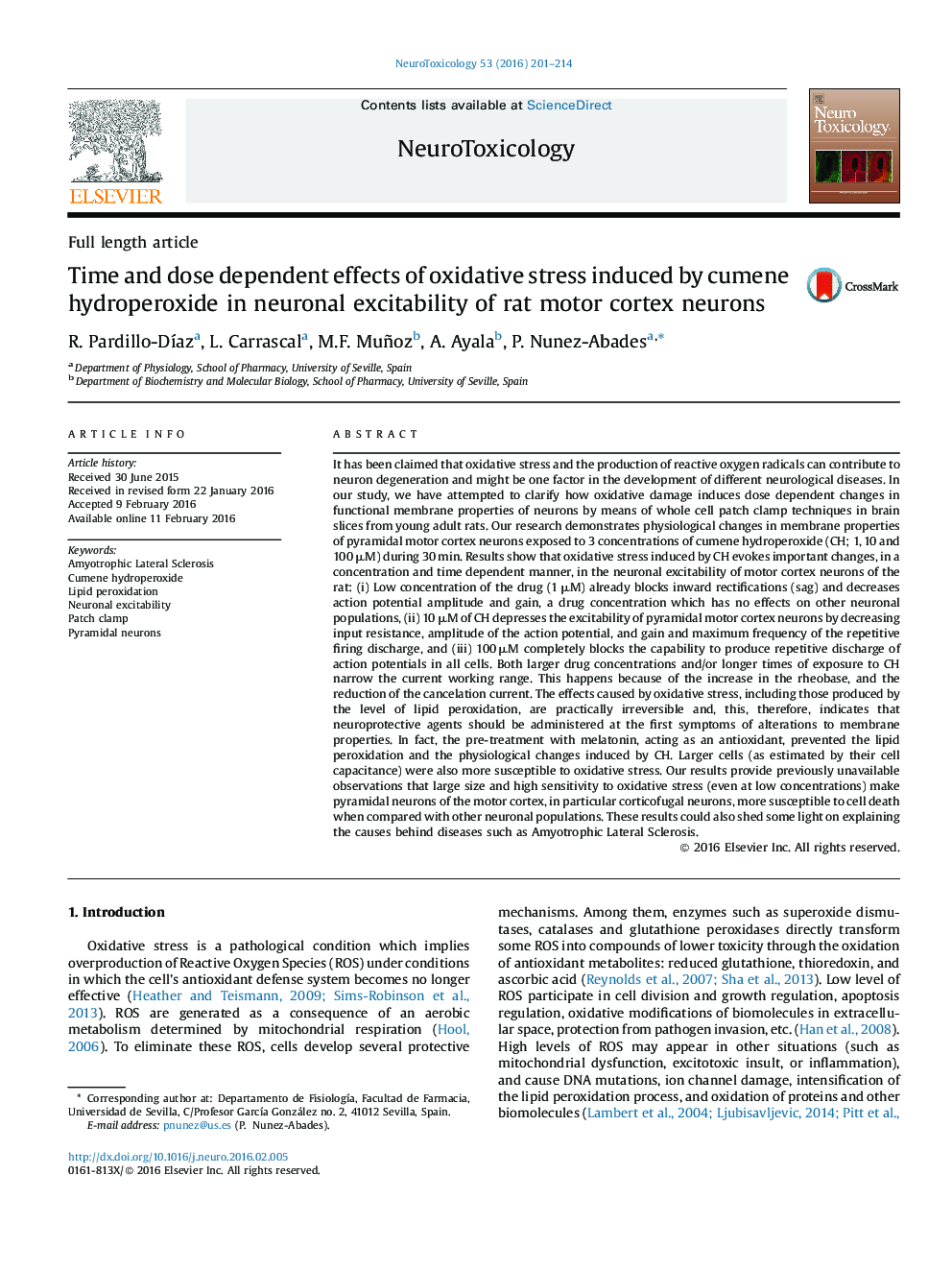| کد مقاله | کد نشریه | سال انتشار | مقاله انگلیسی | نسخه تمام متن |
|---|---|---|---|---|
| 5854796 | 1562041 | 2016 | 14 صفحه PDF | دانلود رایگان |
- CH depresses the excitability of pyramidal neurons in a time/dose dependent manner.
- Reversibility of alterations by CH is inversely proportional to exposure time.
- Ability to repetitively discharge action potentials was the most affected property.
- Large neurons of the motor cortex are more sensitive to the oxidant.
- Melatonin prevented LPO and the physiological changes induced by CH.
It has been claimed that oxidative stress and the production of reactive oxygen radicals can contribute to neuron degeneration and might be one factor in the development of different neurological diseases. In our study, we have attempted to clarify how oxidative damage induces dose dependent changes in functional membrane properties of neurons by means of whole cell patch clamp techniques in brain slices from young adult rats. Our research demonstrates physiological changes in membrane properties of pyramidal motor cortex neurons exposed to 3 concentrations of cumene hydroperoxide (CH; 1, 10 and 100 μM) during 30 min. Results show that oxidative stress induced by CH evokes important changes, in a concentration and time dependent manner, in the neuronal excitability of motor cortex neurons of the rat: (i) Low concentration of the drug (1 μM) already blocks inward rectifications (sag) and decreases action potential amplitude and gain, a drug concentration which has no effects on other neuronal populations, (ii) 10 μM of CH depresses the excitability of pyramidal motor cortex neurons by decreasing input resistance, amplitude of the action potential, and gain and maximum frequency of the repetitive firing discharge, and (iii) 100 μM completely blocks the capability to produce repetitive discharge of action potentials in all cells. Both larger drug concentrations and/or longer times of exposure to CH narrow the current working range. This happens because of the increase in the rheobase, and the reduction of the cancelation current. The effects caused by oxidative stress, including those produced by the level of lipid peroxidation, are practically irreversible and, this, therefore, indicates that neuroprotective agents should be administered at the first symptoms of alterations to membrane properties. In fact, the pre-treatment with melatonin, acting as an antioxidant, prevented the lipid peroxidation and the physiological changes induced by CH. Larger cells (as estimated by their cell capacitance) were also more susceptible to oxidative stress. Our results provide previously unavailable observations that large size and high sensitivity to oxidative stress (even at low concentrations) make pyramidal neurons of the motor cortex, in particular corticofugal neurons, more susceptible to cell death when compared with other neuronal populations. These results could also shed some light on explaining the causes behind diseases such as Amyotrophic Lateral Sclerosis.
Journal: NeuroToxicology - Volume 53, March 2016, Pages 201-214
